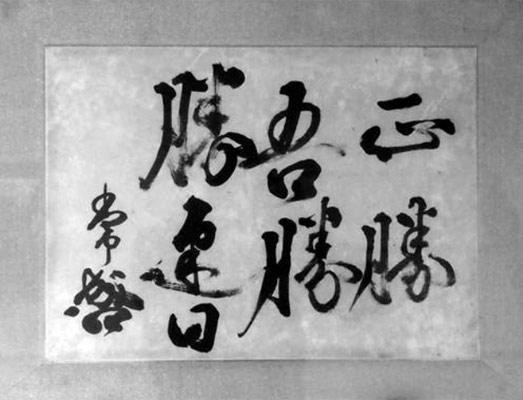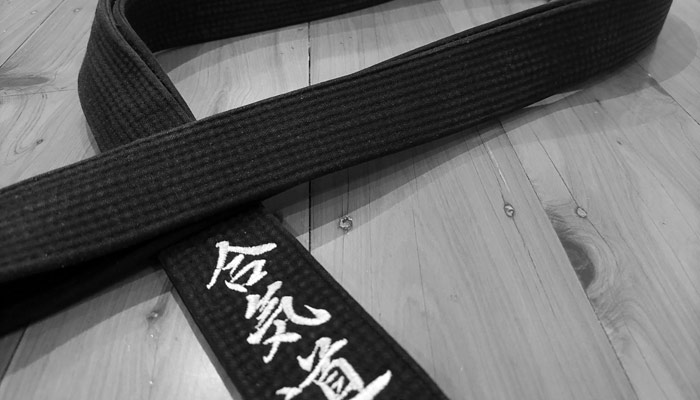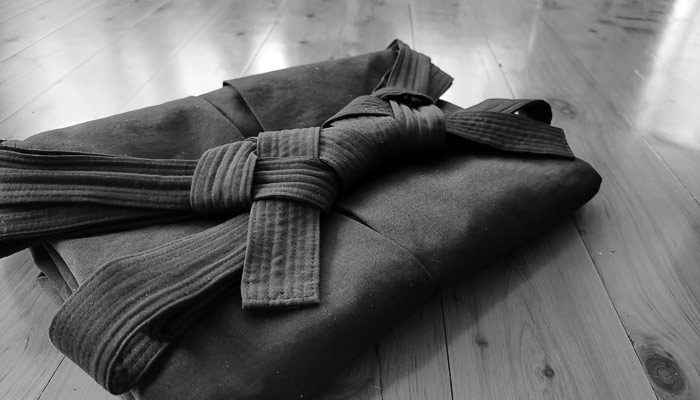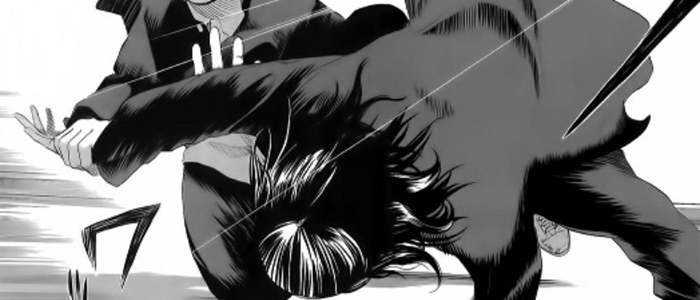-
Masakatsu Agatsu Katsuhayabi: The Path to Victory in Aikido
Aikido is said to be a non-competitive art that emphasizes harmonization with opponents, transcending the common concept of winning or losing. However, the founder Morihei Ueshiba did explain the concept of victory in Aikido through the phrase Masakatsu Agatsu Katsuhayabi 正勝吾勝勝速日, a simple yet profound expression. Before delving into its meaning, let’s discuss its origin. The phrase first appeared in Japanese mythology. According to the Nihon Shoki 日本書紀, Susanoo-no-Mikoto 素戔嗚尊 or 須佐之男命 (as mentioned in Kojiki 古事記), the son of Izanagi 伊邪那岐, made a vow in front of his sister, Amaterasu Omikami 天照大神, stating, “If my heart is pure, a male kami will be born; if impure, a female kami…
-
Divine Revelation and Enlightenment: Morihei Ueshiba’s Vision for Aikido
In the realm of Aikido, the founder Morihei Ueshiba embarked on a transformative journey, guided by profound divine revelations that bestowed upon him a sacred mission to manifest harmony and purification in a world fraught with turbulence. According to legend, Ueshiba received numerous Shinji 神示 (divine revelations) throughout his life. One significant revelation occurred on December 14, 1940, which coincided with Ueshiba’s birthday. At 2:00 AM that day, Ueshiba performed a one-hour Suigyo ritual, a water purification ceremony. During this ritual, he prayed for the descent of deities (kami) associated with Aikido, resulting in the arrival of 43 guardian deities. The first to descend was Sarutahiko-Okami 猿多毘古大神, followed by others,…
-
Understanding the Meaning of Bu 武: A Historical Perspective
Aikido, among other martial arts, falls under the category of Budo 武道. However, what exactly does Bu 武 mean? To fully comprehend the meaning of the character Bu 武, we must trace its origins back to China. The character Bu 武 was first recorded in Jiaguwen 甲骨文, also known as the Oracle Bone Script, which was used in the late 2nd millennium BC. Jiaguwen consisted of pictographs and signs, many of which remain undeciphered today. Over thousands of years, Jiaguwen evolved into Chinese characters and was introduced to Japan around the 6th century. Jiaguwen 甲骨文 To better understand the evolution of the character Bu 武 over time, the diagram below…
-
Kenji Tomiki and his Vision of Competitive Aikido
Kenji Tomiki 富木 謙治 was a scholar and a prominent martial artist who held an 8th dan in both Judo and Aikido. He was an early student of Morihei Ueshiba and played a crucial role in the development of Aikido and the establishment of Shodokan Aikido 昭道館合気道, also known as Tomiki Aikido. Born on March 15, 1900, in Kakunodate 角館町, Akita Prefecture 秋田県, Japan, Tomiki started training in Judo when he was about 10 years old and obtained his shodan rank in 1919. He continued to practice Judo and only in 1926, he was introduced to Morihei Ueshiba by his friend Hidetaro Mishimura, and started training in Aikido (still known…
-
Development of Dan Ranking System in Japanese Martial Arts and its Adoption in Aikido
Martial arts have been an integral part of Japanese culture for centuries. One of the most significant aspects in their development is the introduction of the dan ranking system. The term “dan” 段, which literally means “stage”, was first used by Sansa Honinbo 本因坊 算砂, the founder of the Honinbo Go school in the late 16th century. Go 囲碁 is a traditional strategy board game originated from China and introduced to Japan around the 7th century. The game is played by two players who take turns placing black and white stones on a square grid board. The objective is to gain more territory on the board than your opponent by…
-
The Story Behind Aikido’s Traditional Attire: Hakama
A hakama 袴 is a traditional Japanese garment that has been worn in Japan for centuries. Originally, it was worn by nobles, court officials, and samurai warriors as a symbol of their status and rank. It naturally became the standard outfit for those who practice kobudo 古武道, including the samurai. Today, practitioners of these old arts, as well as modern arts such as aikido 合氣道, iaido 居合道, or kyudo 弓道, continue the tradition of wearing hakama during training. However, some arts have discarded this tradition due to various reasons such as practical reasons in judo 柔道 or origin/religious reasons in shorinji kempo 少林寺拳法. The history of the hakama in aikido…
-
The Rare Beauty of Aikido in Japanese Manga
The popularity of Japanese manga, or comics, has surged globally, largely due to their distinct storytelling, art style, and cultural significance. One popular genre of manga is martial arts, which spotlights the art of combat and various fighting styles. Numerous manga series have been created based on different martial arts, such as Karate, Judo, Kendo, Sumo, Kung Fu, Boxing and MMA. However, manga with Aikido as their primary storyline is rare. Evil Heart is one of the few popular Aikido manga series. It is a drama telling the story of Masaki Umeo, a high schooler with a bad temper who encounters an English teacher from Canada, who is also an…
-
Breaking Barriers: The Pioneering Women of Aikido
Japan has a rich history of women practicing martial arts. Women of the samurai class learned naginatajutsu as part of their education and self-defense training since the Edo period (1603-1867). There are also records of women practicing kenjutsu, ko-tachi 小太刀, kusarigama 锁镰, and other weapon arts, but taijutsu was relatively uncommon. However, the situation began to change in the early 1900s when martial arts such as Judo became a regular part of school curriculums. In 1919, Ueshiba met Onisaburo Deguchi 出口王仁三郎, the founder of the Omoto 大本教 religion in Ayabe 府綾 Kyoto. The following year, Ueshiba moved his family to Ayabe and joined Omoto. Deguchi encouraged Ueshiba to pursue budo…
-
Morihei Ueshiba’s Path from Kenjutsu to Aiki-Ken (Part II)
In 1927, Ueshiba moved to Tokyo and later started teaching in Kobukan 皇武館 dojo. Through his military connections, Ueshiba was later introduced to some of the top martial artists. Among them was Kosaburo Gejo 下条小三郎, a navy commander but also an expert in Yagyu Shinkage Ryu. Gejo was a top student of Yagyu 柳生厳周, the 13th generation head of the Owari Yagyu 尾張柳生 lineage. While Ueshiba and Gejo had more of a friendly relationship rather than a formal teacher/student one, it is generally believed that Ueshiba was exposed to some high level of Yagyu Shinkage Ryu techniques and concepts through this relationship. However, there is also a saying that Gejo…
-
Morihei Ueshiba’s Path from Kenjutsu to Aiki-Ken (Part I)
The origin of Aiki-ken can be traced back to Morihei Ueshiba, the founder of Aikido, and his study of various martial arts styles throughout his life. Some of the major ken-related arts that Ueshiba had exposure to include Yagyu Shinkage Ryu 柳生新陰流, Yagyu Shingan Ryu 柳生心眼流, Daito Ryu 大東流, and Kashima Shinto Ryu 鹿島新当流. In 1902, when Ueshiba was 19, he moved to Tokyo to start a stationery business but returned to Tanabe in less than a year due to a health problem. It was during this short period of time that he trained in Yagyu Shinkage Ryu, but it is unclear who his teacher was. Yagyu Shinkage Ryu was…









